Microbiologically influenced corrosion as a function of environmental conditions: A laboratory study using oilfield multispecies biofilms
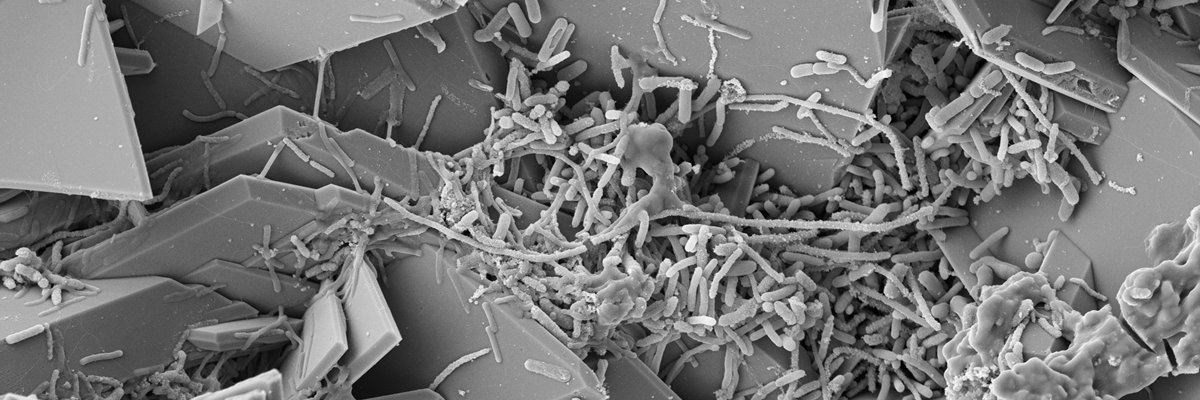
Overview
The impact that sulphur compounds and temperature has on the risk of microbiologically influenced corrosion of carbon steel was assessed using a multispecies consortium recovered from an oil production facility that experienced corrosion failures attributed to MIC despite undetectable sulphate levels measured in its produced water. This investigation found that microbial composition, community structure and activity level of biofilms shifted in response to environmental conditions, which resulted in substantial differences in pitting susceptibility of carbon steel. Microorganisms enhanced pitting when sulphur compounds were available, but there was not a distinctive pattern on the effect of temperature. In average, old biofilms caused greater pitting than young biofilms. Functional profiles predicted from 16S rRNA data revealed that biofilms had similar capabilities regardless of environmental conditions and the extent of corrosion associated with them.
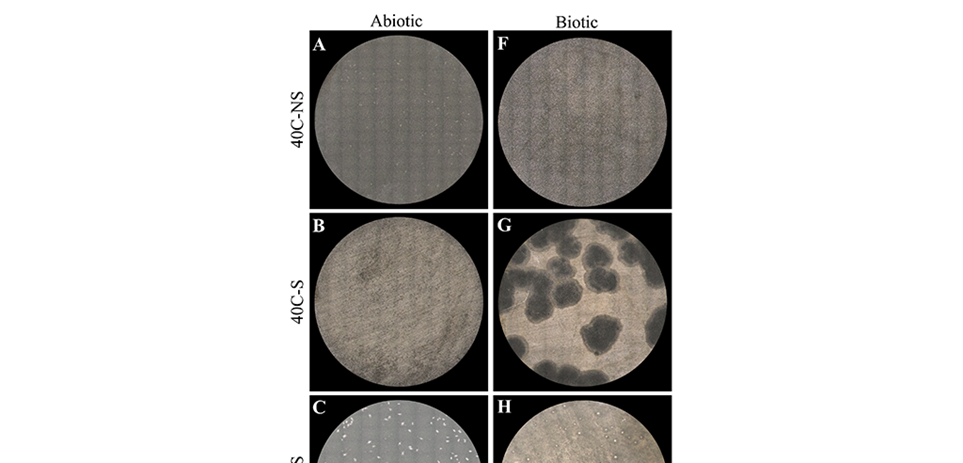

Figure 1. Coupon surfaces after 21 days of corrosion testing. (A, F) coupons exposed to 40 °C without sulphur compounds, (B, G) coupons exposed to 40 °C with sulphate and thiosulphate, (C, H) coupons exposed to 60 °C without sulphur compounds, (D, I) coupons exposed to 60 °C with sulphate and thiosulphate, (E, J) coupons exposed to 60 °C with thiosulphate.
Objectives
This investigation aimed to evaluate the risk of MIC in carbon steel as a function of sulphur compounds, temperature and biofilm maturation. The study included the analysis of the effect of environmental conditions on microbial composition, community structure and activity of multispecies biofilms.
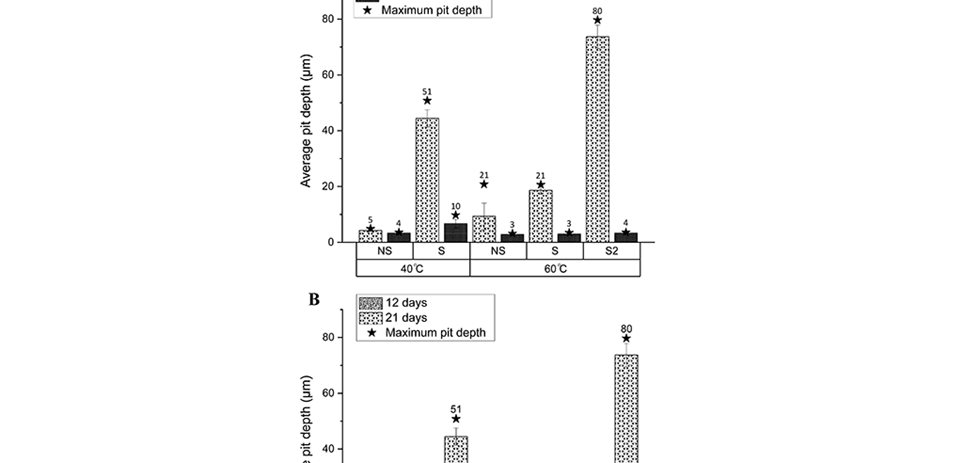

Figure 2. Average pit depths and pitting rate calculated from the maximum pit depth. (A) Average pit depth of coupons exposed for 21 days to biotic and abiotic conditions. (B) Average pit depth of coupons exposed for 12 days and 21 days to biotic conditions. (C) Pitting rate of coupons exposed to biotic conditions for 12 and 21 days, and abiotic conditions for 21 days. NS: Sulphur compounds absent, S: sulphate and thiosulphate present, S2: thiosulphate present.
Why is it important?
Research and management of microbiologically influenced corrosion (MIC) have been particularly centralized in the deterioration that sulphate-reducing microorganisms can trigger on metallic surfaces. Most of the MIC prediction models consider the presence of SRB and the concentration of sulphate as part of the important parameters to consider for the MIC risk assessment. However, this approach is not appropriate for low-sulphate environments where microbial communities are dominated by other microbial groups different from SRB. In this paper, it is demonstrated that microorganisms can trigger severe corrosion rates in the absence of sulphate.
Get The Paper!
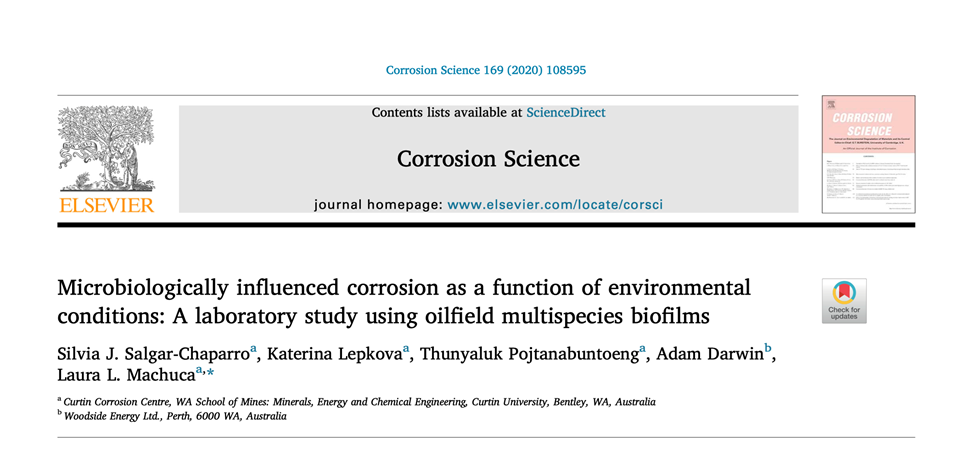
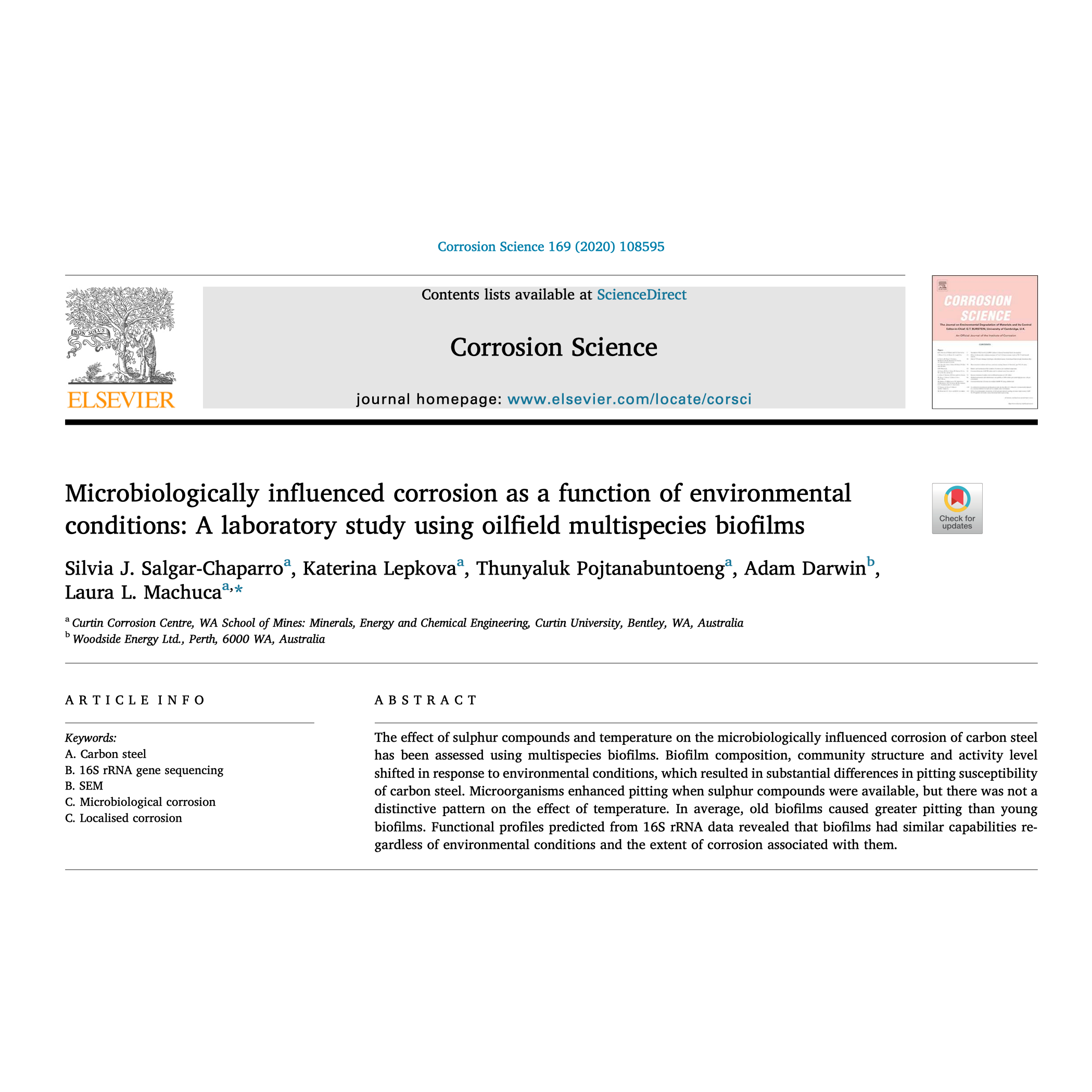
Salgar-Chaparro et al. (2020)
Citation
S.J. Salgar-Chaparro, K. Lepkova, T. Pojtanabuntoeng, A. Darwin, L.L. Machuca, Microbiologically Influenced Corrosion as a function of environmental conditions: a laboratory study using oilfield multispecies biofilms, Corrosion Science, 169 (2020) 108595. https://doi.org/10.1016/j.corsci.2020.108595


